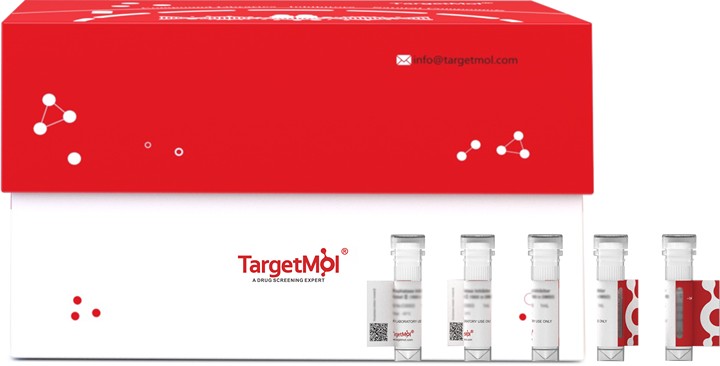Shopping Cart
- Remove All
 Your shopping cart is currently empty
Your shopping cart is currently empty

PVRL1/NECTIN1 Protein, Human, Recombinant (hFc), Biotinylated is expressed in HEK293 mammalian cells with hFc tag. The predicted molecular weight is 61 kDa and the accession number is Q15223-1.

| Pack Size | Price | Availability | Quantity |
|---|---|---|---|
| 20 μg | $197 | In Stock | |
| 100 μg | $468 | 7-10 days | |
| 200 μg | $797 | 7-10 days | |
| 500 μg | $1,610 | 7-10 days |
| Biological Activity | Activity testing is in progress. It is theoretically active, but we cannot guarantee it. If you require protein activity, we recommend choosing the eukaryotic expression version first. |
| Description | PVRL1/NECTIN1 Protein, Human, Recombinant (hFc), Biotinylated is expressed in HEK293 mammalian cells with hFc tag. The predicted molecular weight is 61 kDa and the accession number is Q15223-1. |
| Species | Human |
| Expression System | HEK293 Cells |
| Tag | C-hFc |
| Accession Number | Q15223-1 |
| Synonyms | SK-12,PVRR1,PVRR,PRR1,PRR,poliovirus receptor-related 1 (herpesvirus entry mediator C),OFC7,nectin-1,HVEC,HV1S,HIgR,ED4,CLPED1,CD111 |
| Construction | A DNA sequence encoding the human PVRL1 isoform 1 (NP_002846.3) extracellular domain (Met 1-Thr 334) was was fused with the Fc region of human IgG1 at the C-terminus. The purified protein was biotinylated in vitro. Predicted N terminal: Gln 31 |
| Protein Purity | > 95 % as determined by SDS-PAGE.  |
| Molecular Weight | 61 kDa (predicted); 75-85 kDa (reducing condition, due to glycosylation) |
| Endotoxin | < 1.0 EU/μg of the protein as determined by the LAL method. |
| Formulation | Lyophilized from a solution filtered through a 0.22 μm filter, containing PBS, pH 7.4. Typically, a mixture containing 5% to 8% trehalose, mannitol, and 0.01% Tween 80 is incorporated as a protective agent before lyophilization. |
| Reconstitution | A Certificate of Analysis (CoA) containing reconstitution instructions is included with the products. Please refer to the CoA for detailed information. |
| Stability & Storage | It is recommended to store recombinant proteins at -20°C to -80°C for future use. Lyophilized powders can be stably stored for over 12 months, while liquid products can be stored for 6-12 months at -80°C. For reconstituted protein solutions, the solution can be stored at -20°C to -80°C for at least 3 months. Please avoid multiple freeze-thaw cycles and store products in aliquots. |
| Shipping | In general, Lyophilized powders are shipping with blue ice. |
| Research Background | Poliovirus receptor-related 1 (herpesvirus entry mediator C; nectin-1; CD111), also known as PVRL1 is a cell adhesion molecule belonging to the immunoglobulin superfamily that can bind to virion glycoprotein D (gD) to mediate entry of herpes simplex viruses (HSV) and pseudorabies virus (PRV). CD111/Nectin-1/PVRL1 colocalizes with E-cadherin at adherens junctions in epithelial cells. The disruption of cell junctions can result in the redistribution of nectin-1. To determine whether disruption of junctions by calcium depletion influenced the susceptibility of epithelial cells to viral entry, Madin-Darby canine kidney cells expressing endogenous nectin-1 or transfected human nectin-1 were tested for the ability to bind soluble forms of viral gD and to be infected by HSV and PRV, before and after calcium depletion. It has been revealed that binding of HSV and PRV gD was localized to adherens junctions in cells maintained in normal medium but was distributed, along with nectin-1, over the entire cell surface after calcium depletion. Both the binding of gD and the fraction of cells that could be infected by HSV-1 and PRV were enhanced by calcium depletion. Taken together, CD111/Nectin-1/PVRL1 confined to adherens junctions in epithelial cells is not very accessible to virus, whereas dissociation of cell junctions releases nectin-1 to serve more efficiently as an entry recptor. |

Copyright © 2015-2025 TargetMol Chemicals Inc. All Rights Reserved.